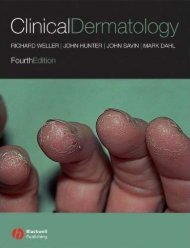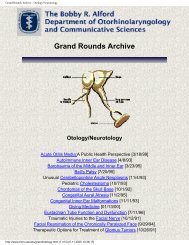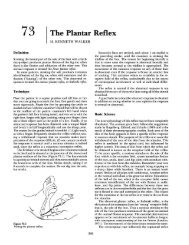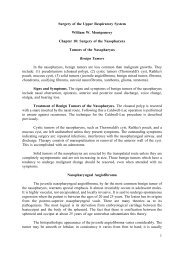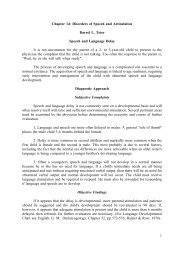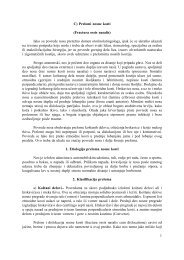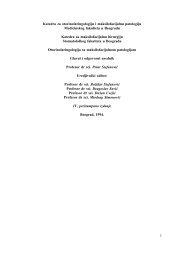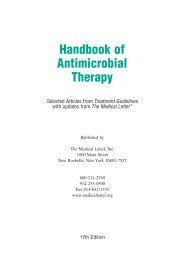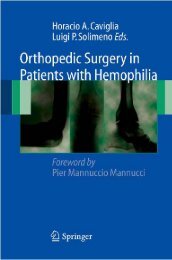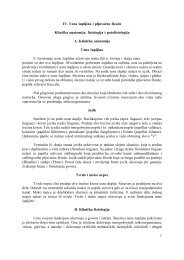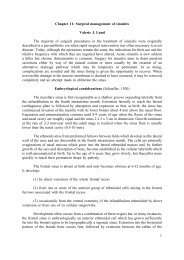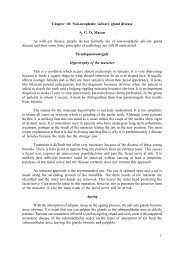1 Chapter 13: Acute suppurative otitis media and acute mastoiditis ...
1 Chapter 13: Acute suppurative otitis media and acute mastoiditis ...
1 Chapter 13: Acute suppurative otitis media and acute mastoiditis ...
Create successful ePaper yourself
Turn your PDF publications into a flip-book with our unique Google optimized e-Paper software.
Treatment of <strong>acute</strong> <strong>suppurative</strong> <strong>otitis</strong> <strong>media</strong><br />
Treatment of <strong>acute</strong> <strong>suppurative</strong> <strong>otitis</strong> <strong>media</strong> is considered under the following<br />
headings:<br />
(1) curative<br />
medical<br />
general<br />
analgesics<br />
topical<br />
antibiotics<br />
[decongestants]<br />
surgical - myringotomy<br />
(2) [prophylactic]<br />
(3) treatment of associated conditions<br />
(4) treatment of complications.<br />
The square brackets indicate treatment modes not generally considered to be<br />
appropriate.<br />
Curative<br />
Medical treatment<br />
General<br />
Both children <strong>and</strong> adults are best managed in bed in the <strong>acute</strong> phase, in a warm room,<br />
of adequate humidity to maintain ciliary function. Febrile <strong>and</strong> toxic children will need no<br />
persuasion to stay in bed; afebrile children can be allowed up but kept indoors. As in any<br />
infective illness, nourishment <strong>and</strong> fluid intake must be adequate, <strong>and</strong> supplementary vitamins,<br />
especially C, can be added if the patient's normal diet is thought to be inadequate. Some<br />
patients, both children <strong>and</strong> adults, are better managed in hospital, depending on the severity,<br />
length of history, response to previous treatment, <strong>and</strong> other factors such as association with<br />
diabetes or other illness. Hospitalization provides the opportunity for frequent observation of<br />
the general <strong>and</strong> local condition, <strong>and</strong> for investigations, if complications are suspected or<br />
surgery is considered.<br />
Analgesics<br />
These must be given in adequate dosage <strong>and</strong> with sufficient frequency to control pain.<br />
Topical<br />
When otorrhoea is present the discharge should be gently mopped with dry sterile<br />
cotton wool or sucked from the canal, as often as it recurs. A piece of cotton wool can be<br />
placed at the orifice of the ear canal to prevent the discharge running down <strong>and</strong> excoriating<br />
the skin of the ear lobe.<br />
11




